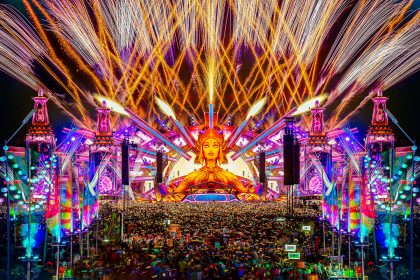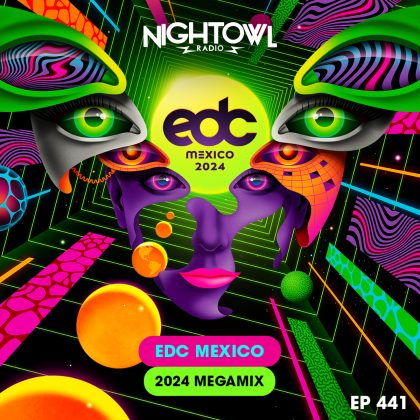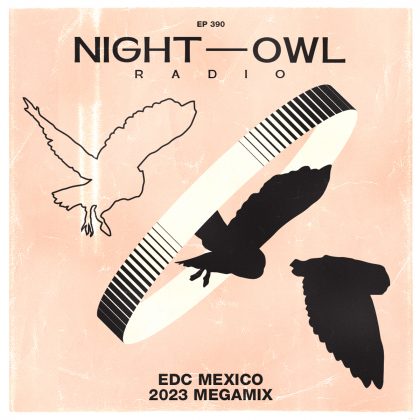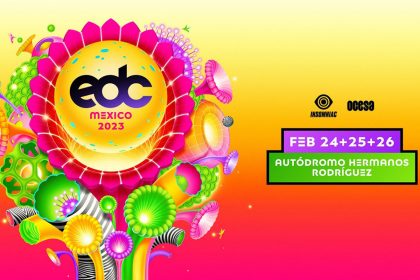A Raver’s Translation Guide for EDC Mexico 2016
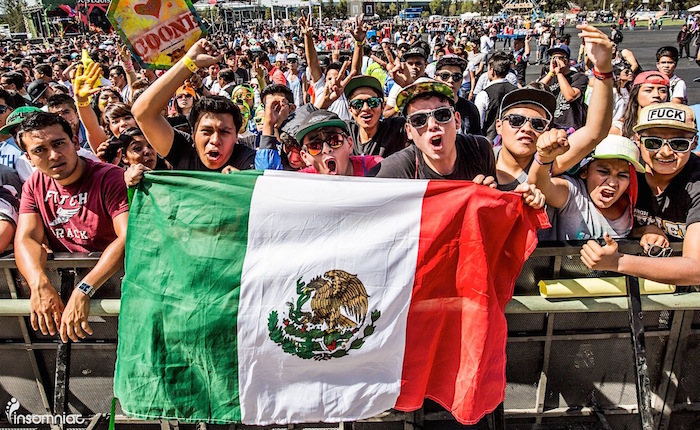
Members of the international rave community know there’s a special language shared among fellow dance music enthusiasts. A standard word in the English language could have a completely different meaning in the electronic public. On any given day, the term “filthy” describes something that’s disgustingly dirty—probably how your mom describes your room before yelling at you to clean it up. On rave day, however, “filthy” describes the type of face-rattling bass that sends chills down your spine and has you wondering how on earth you’re still standing on your own two feet.
As rave culture expands globally, so too does the vernacular. For Headliners attending EDC Mexico, we’ve provided a nifty translation guide with the roving raver in mind. Some of these terms are literal translations from Spanish to English, some are portmanteaus, some are regional words used by the Mexican locals, and some are just straight made-up words. Keep this guidebook nearby as you traverse Mexico City, and brush up on your worldwide rave language.
D.F.: This is the shortened abbreviation for Mexico City, which is officially known as Mexico, D.F. The “D.F.” stands for distrito federal, Spanish for “federal district.” If you hear a local saying “D.F.,” know they’re speaking of Mexico City.
chilango: Spanish slang term describing people born or residing in Mexico City.
cuate/camarada: Spanish slang terms meaning “friend.” Cuate is equivalent to “homie,” while camarada means “comrade” or “colleague.”
PLURrito: This describes when you and your rave family are too broke to afford separate hotel rooms, so you squish four grown adults into one queen-size bed and snuggle tightly together under the sheets.
chido: Spanish slang term for cool; primarily used in Mexico.
dulce: It’s the literal translation for “candy”—the sweet kind, not the rave kind.
PAUR: Rave culture is a growing phenomenon in the country. As such, the concept of PLUR is still relatively new. In speaking with one local Headliner, we learned that the PLUR acronym of Peace, Love, Unity, and Respect almost exactly translates in Spanish, save for one word. In Spanish, PLUR translates to PAUR: Paz (Peace), Amor (Love), Unidad (Unity) and Respeto (Respect).
tribal/tribal guarachero: This type of Latin-driven electronic music mixes pre-Hispanic rhythms, indigenous Mexican flute and percussion samples, African drumbeats, and cumbia basslines with modern electronic grooves. Pioneered by groups like 3BallMTY, who are facetiously dubbed the Mexican Swedish House Mafia, tribal guarachero is strange, unconventional, and weirdly danceable, and it remains one of the more intriguing factions of global bass. Read a fascinating deep-dive feature on tribal guarachero via The Fader, and peep below for a taste.
botas picudas: Botas picudas (“pointy boots”) are a bizarre fashion trend closely associated with the aforementioned tribal guarachero movement. Originated in Matehuala in the Mexican state of San Luis Potosí, botas picudas have since spread all across Mexico and into the US. The whole point of the footwear is to make them as ridiculously elongated as physically possible by using different materials, including plastic hose, leather, and screws. Much like kandi, wearers customize their pointy boots to reflect their individual personalities and interests, from Mexican flags, LED lights, disco balls, and basically anything imaginable. Locals then form dance groups to compete with other troupes in choreographed dance-offs. The dance style is reminiscent of shuffling—but in a much more limited capacity, given the boots’ awkward length. Explore the curious world of botas picudas in this Vice mini-documentary.
NAAFI: Shaping Mexico City’s underground electronic music scene today, NAAFI is a forward-thinking artist collective, events and promotion brand and tastemaker label. Led by core members Fausto Bahía, Paul Marmonta, Lao, and Mexican Jihad, NAAFI is carving a new identity for Mexican electronic sounds via weirdos like Smurphy, Siete Catorce, Mock the Zuma and Zutzut. The group made a name for itself via its independent party aesthetic and is now pushing Mexico’s underground to global reach via the label’s growing family of artists.
ruidosón: Roughly translated to “noise music” or “noise folk,” ruidosón is a genre born out of Northern Mexico, which blends current electronic and techno elements with traditional folk, cumbia, Mexican regional music, and pre-Colombian rhythms. The sound, pioneered by Los Macuanos and developed by artists like María y José and Santos, is darker and heavier in tone and scope, a reflection of the growing violence driven by corrupt governments and drug cartels in Northern Mexico and border town Tijuana, as well as throughout the country. Using cultural references and city noise, artists make societal and political statements in their music to capture the heart, sound, urban decay, and angst of a nation.
Follow EDC Mexico on Facebook | Twitter | Instagram

